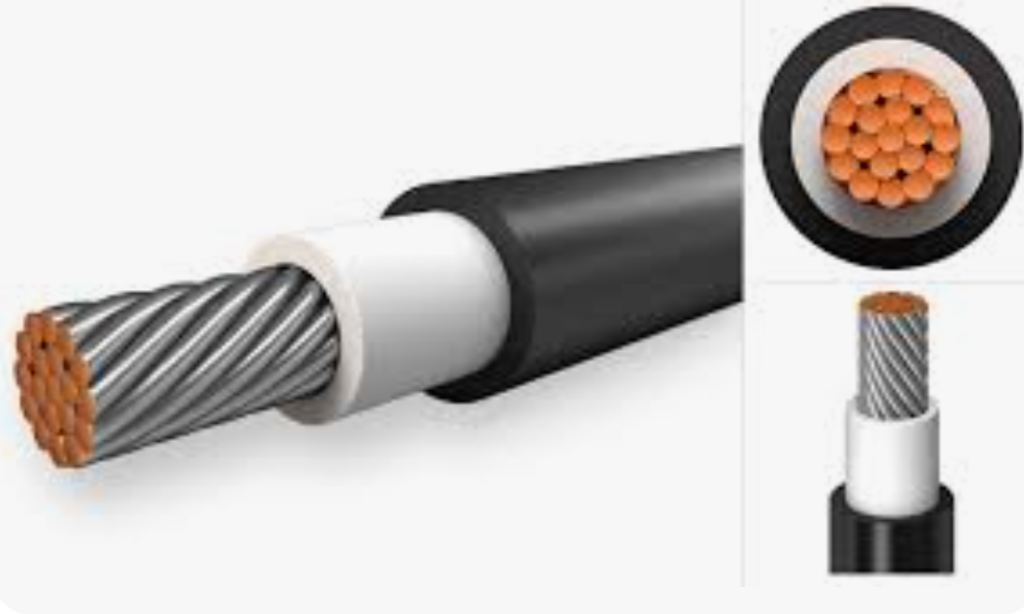The sun has been a source of energy for life on Earth, and now it’s becoming a source of power for our homes and businesses too. Solar power is a rapidly growing industry, and with that growth comes a demand for specialized equipment, including dedicated solar cables. But what sets these solar cables apart from your standard electrical wires? Let’s dive into the nuances of solar cables and how they differ from the wires you might find in your home’s walls.

The Sun’s Power Lines: Solar Cables Explained
Solar cables, like the UL solar cable and H1z2z2-k solar cable, are designed specifically for outdoor use and to handle the unique demands of solar energy systems. They’re built to withstand the elements and the specific electrical characteristics of photovoltaic systems. Unlike standard electrical wires, which are typically used for general indoor applications, solar cables are made to endure the harsh outdoor conditions that solar panels face daily.
Rugged Construction: Withstanding the Elements
One of the first things you’ll notice about solar cables is their robust construction. They’re designed to be UV resistant, which is crucial as they’re often exposed to direct sunlight for long periods. The H1z2z2-k solar cable, for instance, is built with a jacket that can handle the sun’s rays without degrading, ensuring a long lifespan. Standard electrical wires, on the other hand, aren’t typically rated for UV resistance and can deteriorate over time when exposed to sunlight.
Temperature Tolerance: Hot Under the Collar Temperature fluctuations are another factor that solar cables are made to handle. Solar systems can generate a lot of heat, and the cables need to be able to transfer that energy without getting damaged. The H1z2z2-k solar cable is designed with a high-temperature rating, which allows it to operate safely in the heat generated by solar panels. Standard wires might not have the same heat tolerance, which could lead to safety hazards if used in solar applications.
Electrical Performance: Powering Up When it comes to electrical performance, solar cables are optimized for the specific needs of solar panels. They’re designed to minimize power loss and maximize efficiency. The UL solar cable, for example, is engineered to have low resistance and high flexibility, ensuring that power is transferred efficiently from the panel to the inverter. Standard electrical wires might not offer the same level of performance, which can lead to energy loss and decreased efficiency in a solar system.
Longevity: A Cable for the Ages The longevity of solar cables is another area where they differ from standard electrical wires. Solar systems are designed to last for decades, and the cables need to be able to stand up to that kind of long-term use. The H1z2z2-k solar cable is made with materials that resist aging and maintain their integrity over time, ensuring that your solar system will continue to function at its best for years to come. Standard wires might not have the same lifespan, which could mean more frequent replacements and additional costs.
Safety Features: A Shield Against Danger Safety is paramount in any electrical system, and solar cables are no exception. They come with built-in safety features that standard wires might not have. For example, the H1z2z2-k solar cable is designed with a flame-retardant jacket, which can help prevent the spread of fires in the event of an electrical fault. This is especially important in outdoor applications where fires can spread quickly. Standard electrical wires might not have the same level of flame resistance, which could pose a risk in certain situations.
Installation and Flexibility: Bending to Your Will When it comes to installation, solar cables offer a level of flexibility that can make the process easier and more efficient. The UL solar cable, for example, is designed to be highly flexible, which allows it to be easily routed around obstacles and through tight spaces. This can be particularly useful in installations where space is at a premium or where the cable needs to follow a specific path. Standard electrical wires might not offer the same level of flexibility, which could make installation more challenging.
Environmental Impact: Going Green The environmental impact of our energy sources is a growing concern, and solar power is a key part of the solution. Solar cables, like the H1z2z2-k solar cable, are made with materials that are more environmentally friendly than those used in standard electrical wires. They’re designed to be recyclable and to have a lower carbon footprint, which aligns with the green ethos of solar energy. Standard wires might not have the same eco-friendly credentials, which could be a consideration for those looking to minimize their environmental impact.
Cost Considerations: Investing in the Future While the upfront cost of solar cables might be higher than that of standard electrical wires, it’s important to consider the long-term savings. Solar cables are designed to last longer and offer better performance, which can result in lower maintenance costs and increased efficiency over time. The H1z2z2-k solar cable, for example, might have a higher initial cost, but its durability and performance can save you money in the long run. Standard wires might be cheaper initially, but they could require more frequent replacements, which can add up over time.
Conclusion: The Right Cable for the Job In conclusion, while solar cables and standard electrical wires might look similar, they serve very different purposes. Solar cables, like the UL solar cable and H1z2z2-k solar cable, are specifically designed to meet the unique demands of solar energy systems. They offer advantages in terms of durability, performance, and safety that standard wires simply can’t match. As the adoption of solar power continues to grow, understanding the differences between these two types of cables will become increasingly important. So, the next time you’re looking to harness the power of the sun, make sure you’re using the right cables for the job.











